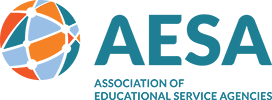AESA, joined by ten other education organizations, submitted comments to the Department of Homeland Security urging them to rescind the new public charge rule.
Read MoreOn December 9, the House passed the Secure Rural Schools Reauthorization Act, which reauthorizes the program for FY24-FY26. As a reminder, the program provides critical resources for counties and schools that are near National Forest Land and are unable to generate property tax revenue.
Read MoreFederal attention on children and technology has surged in recent weeks, with Congress and federal agencies advancing a wide range of proposals. The House Commerce Committee introduced 19 tech-related bills—several affecting schools—and described them as part of a comprehensive strategy to protect children online. However, House versions of COPPA 2.0 and the Kids Online Safety Act diverge sharply from their bipartisan Senate counterparts, introducing partisan elements, broad preemption of state laws, and weaker safeguards for children and teens. Meanwhile, the National Telecommunications and Information Administration announced a December 10 listening session on excessive screen time and signaled interest in linking federal broadband and technology funding to outcomes tied to children’s well-being, potentially affecting programs such as BEAD and E-Rate.
Read MoreThe Nation’s Children Need You – Urge Congress to Maintain Education Funding for Vital Programs Now
Read MoreLast week, the Department of Homeland Security (DHS) proposed reissuing a regulation that could penalize noncitizens who use Medicaid and other income-based public benefit programs.
Read MoreOn November 18, U.S. Secretary of Education Linda McMahon announced six new interagency agreements (IAAs) with four agencies to “break up the federal education bureaucracy, ensure efficient delivery of funded programs, activities, and move closer to fulfilling the President’s promise to return education to the states.”
Read MoreThe Trump administration under Secretary McMahon has indicated a willingness to entertain expanded waivers of certain requirements under ESEA. A handful of states have already begun testing the limits of that potential flexibility, authorized under Section 8401.
Read MoreNovember 12 marked the end of the longest government shutdown in U.S. history. The House reconvened for the first time since mid-September to consider the funding bill the Senate passed on Monday night. The President and House Republican leaders support the measure, while most Democrats and some Republicans oppose it for different reasons.
Read MoreOn November 9, the Senate took the first procedural step to end the government shutdown after a group of moderate Democrats reached a deal with their Republican counterparts. There are still many procedural steps necessary, but this move means the government will likely be open by the end of the week.
Read MoreThe FCC voted 2 to 1 on orders that would make both Wi-Fi on school buses and Wi-Fi hotspots ineligible for E-Rate support.
Read MoreRelated Resources
|
Other websites and resources:
United States Department of Education
IDEA Legislation:
Chapter 33-Education of Individuals with Disabilities
